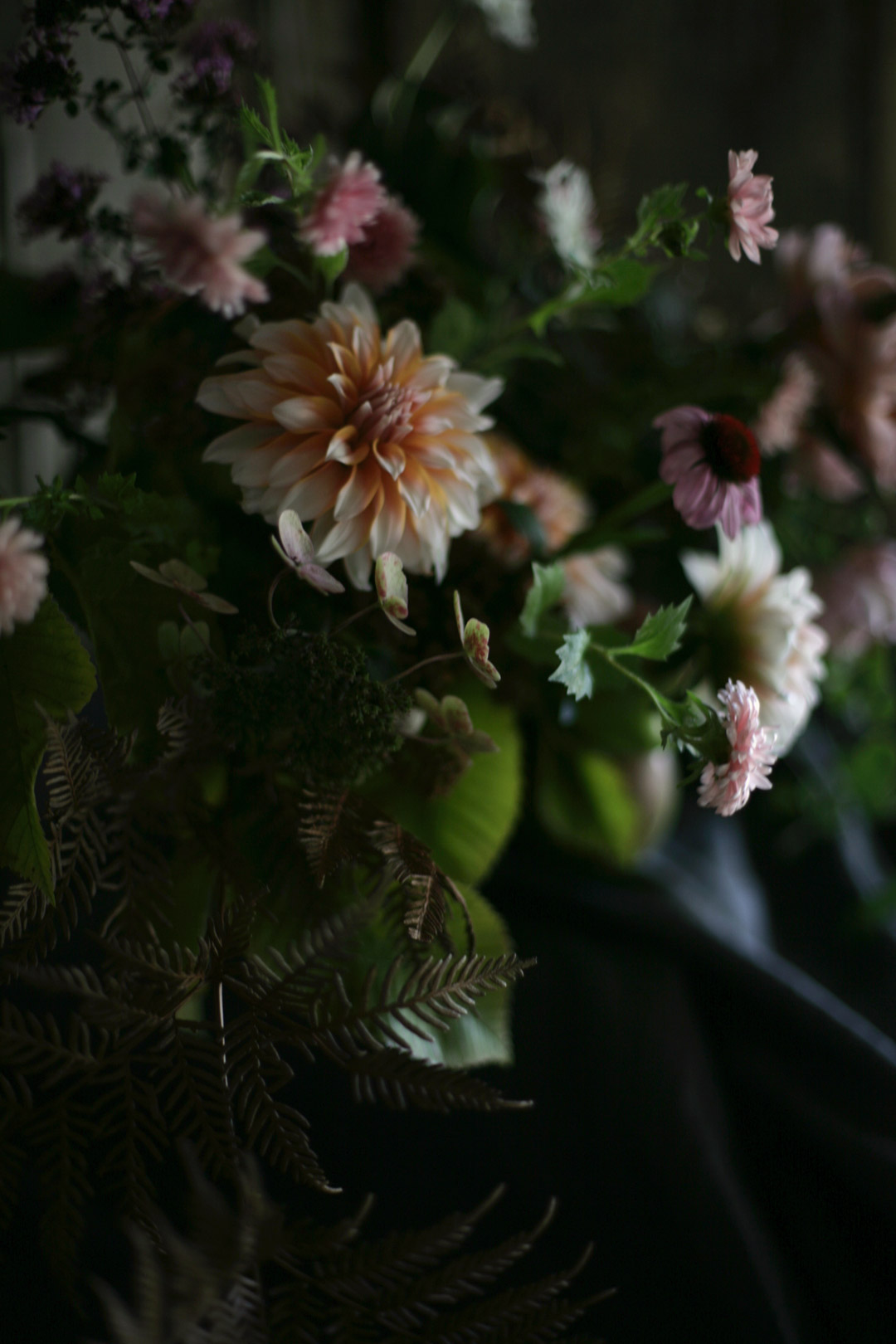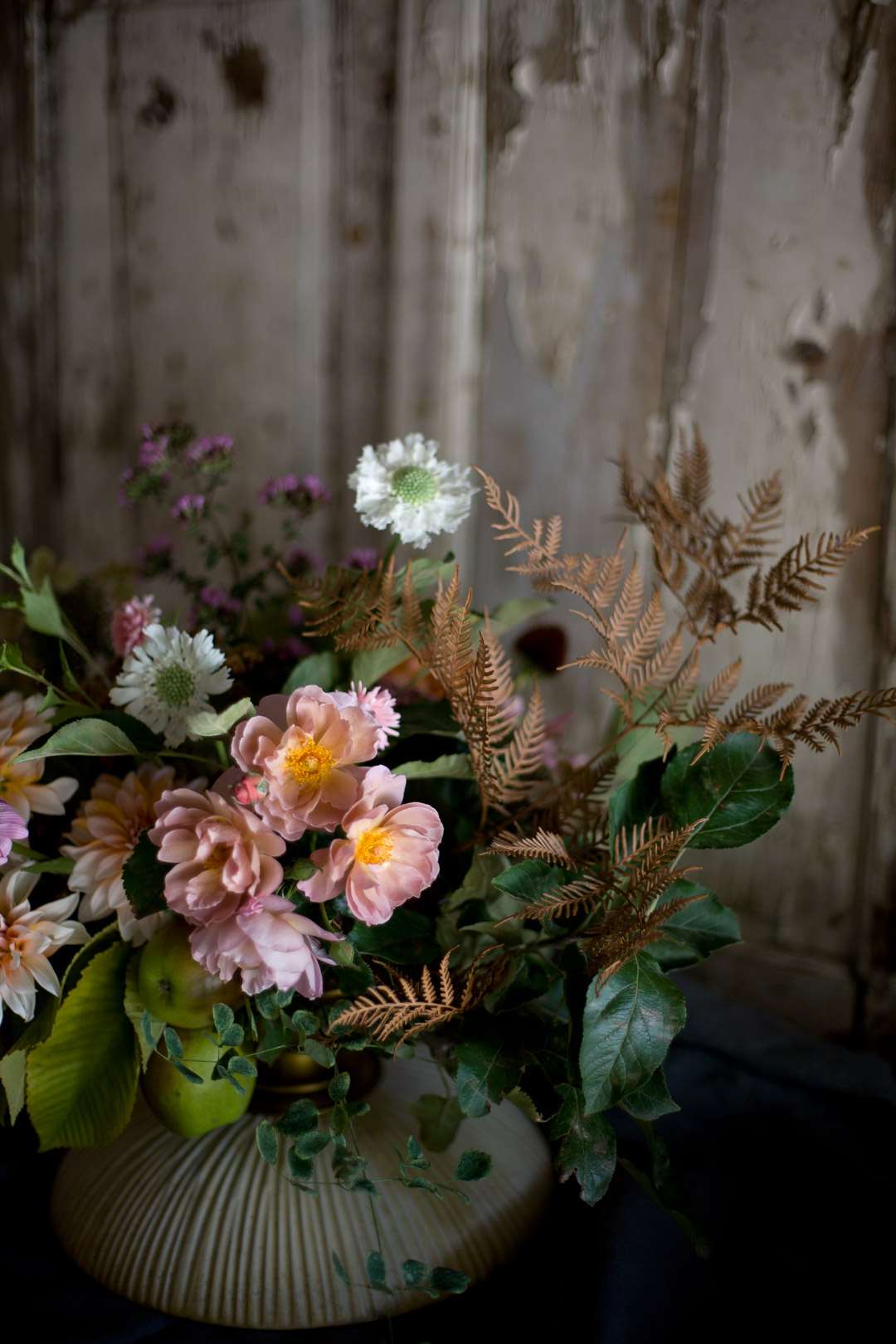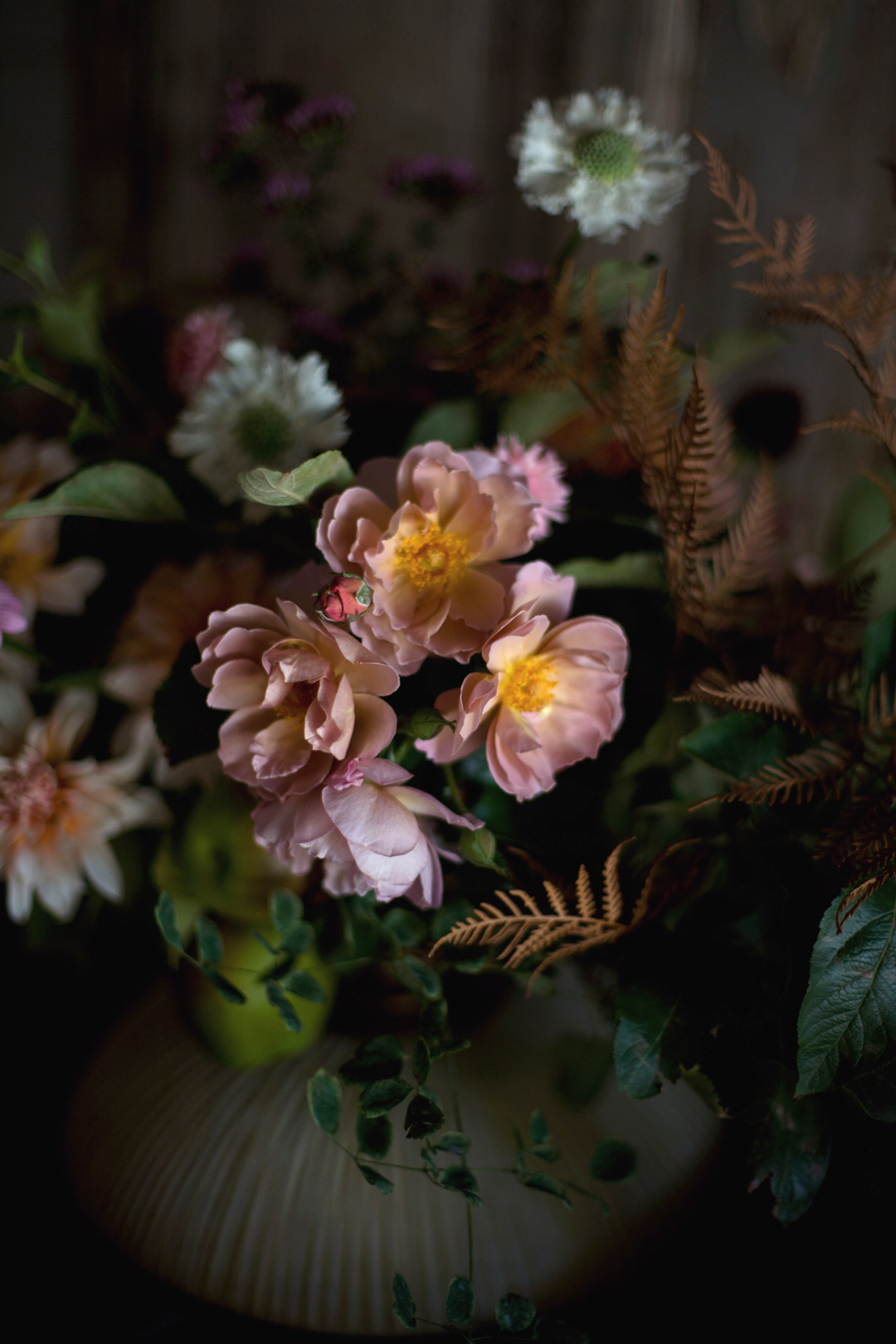I went on the radio today and I did rubbish. Well that's not entirely accurate, I did a pre-recorded interview for ABC Radio National and I did fine. But I feel so disheartened at my inability to prioritise the important arguments, realign all the misinformation and clearly summarise all the nuances of the current state that is Flowers in Australia … in eight minutes.
I mean, this was my chance - an interview on the largest radio station in the nation – maybe, just maybe, I could help to illustrate to the general public what the issues really are with our industry. And more importantly, help people to realise that it is not all doom and gloom, we have a wonderful local flower growing industry who, for the most part, do their upmost by the environment and by the customer. But I fear that that is not what is going to come across when it airs tomorrow.
So, I thought I would write it down here. I am constantly being told to resurrect this blog, to write down my views; to try and put on paper some of the dialogue that I so passionately share with friends, colleagues and, occasionally, total strangers. Please don't consider this a Resurrection, for I fear I will not be able to live up to expectation. But it is FINALLY raining outside, honest to goodness pouring with rain, like I haven't seen in 9 long, hot, dry months and I have that niggling unease of things unsaid. So here goes....
Correcting mis-information about our industry:
The large majority of cut flowers sold in Australia ARE STILL AUSTRALIAN GROWN. Let's keep it that way
Contrary to some statements published in the popular media, on average, Australia still grows more than 70% of the cut flowers sold within Australia.
The Australian Bureau of Statistics (ABS) put the net value of Australian cut flower production at $276.2 million in the year ending 2017. The Global Trade Atlas (GTA) put the value of Australian cut flower imports at $66.8 million. That's 24.18% imports to 75.82 % local grown by my calculations.
Imported flowers are on the rise, and fast.
According to the Global Trade Atlas Australian cut flower imports have grown from a net value of $19.8m in the 2010/2011 financial year to $62.8m in the 2014/2015 FY. That is a growth of more than triple in 4 years. Interestingly there was a slight decrease in cut flower import value in the 2016/2017 FY but overall industry growth was only 1% in that year and from on the ground experience, I suspect 2018 will see another jump in import value.
Incidentally, Australian cut flower export more than halved in the 2011- 2015 period. The Australian flower industry is shrinking.
Imported varieties are displayed alongside local ones.
Just because it is a rose or a chrysanthemum and it's Mother's day, doesn't mean that it came from some far flung country. Autumn is chrysanthemum season, these guys are at their absolute peak for Mother's day, naturally. And while garden rose season is well and truly done, local unheated greenhouses are still producing high quality conventional roses. Falling in February, Valentine's Day does happen during peak rose season here in Australia. The problem is, that to meet demand at these peak times imported varieties are brought in and sold right alongside local grown product with absolutely nothing to distinguish the product's origin.
It's not the florists' fault.
Please don't blame the shop-girl or the grocer if they can't tell you where the product came from. Please do ask the question but also have the patience and compassion to allow them a chance to find out because they probably don't know the answer. It is a sad fact that unless you were the person at the wholesale flower market, making the purchases, and you asked the wholesaler where the product came from, and he was willing and able to give you the answer; you have very little way of knowing whether those roses, calla lilies, scabiosa, chrysanthemums or freesias came from 2 hours down the road or half way across the world. And sadly, neither our industry training systems or the prevailing market atmosphere prioritise this as an issue, or even a concept to think about; let alone make public.
AND NOW, A FLORAL INTERLUDE ...
Imports – what are the issues?
There are 3 main issues with imported flowers:
- The conditions - environmental and social – under which the product was grown in it's country of origin.
- Flower miles: the insanity of flying a non-essential, perishable product around the world and it's environmental impact.
- Chemical usage due to Australia's bio-security measures.
The first you can now find plenty of information about. We can thank Amy Stewart for that. In 2002 Amy Stewart published “Flower Confidential: The Good, the Bad and the Beautiful”. It was the first mainstream exposé on the international flower industry and some of the scary truths about where “our” {Stewart is an American and wrote predominantly about imports into that country} flowers come from. There is now significant dialogue in the media about the dreadful conditions under which flowers are grown in some developing nations. Countries such as Kenya, Zimbabwe, Ethiopia, Columbia and Ecuador are supplying huge volumes of product into the global market.
The concerns with these countries of origin are:
- Inferior labour and wage laws, resulting in often deplorable work conditions.
- Inferior chemical regulation: these countries have not ratified various international protocols to prevent them from engaging in use of chemicals such as DDT, methyl bromide, dieldrin and methyl parathion; all of which are deemed highly toxic, unsafe and banned by most industrialised countries.
- Natural resource allocation. Water. Why? Why? Why? Are we growing some of the highest water consuming crops in some of the globe's driest countries?
The second point is a no-brainer. Flower Miles = High Carbon footprint. And if you think to avoid some of the above issues by purchasing flowers imported from industrialised nations, such as Holland; then I am afraid you are only purchasing more CO2 emissions. For in order to produce such large volumes of flowers, year-round, in that highly evolved nation; the Netherlands grows all it's flowers in enormous climate controlled artificial environments. From heated greenhouses to chilled greenhouses all with artificial lighting, irrigation and air control systems. The carbon footprint is huge.
The last point is one which doesn't get much press at all. And yet, it is the one that started this all for me. I started looking into Australia's import requirements on cut flowers after I noticed a trend. Every Tuesday the orchid order arrived at the inner-city florist in which I worked, I would help unpack anywhere from 6 to 15 boxes of orchids, antheriums and tropical foliages flown in from Singapore. Every Tuesday evening I would develop a migraine. So why? Singapore is no Ethiopia, surely we're not talking extremely hazardous chemicals, such as those listed above, applied during cultivation? We may or we may not be. But here is what I learnt....
Every single stem of cut flower or foliage that comes into Australia, no matter where it comes from, must be completely free from invertebrates, micro-organism, pathogens and signs of plant disease. For the protection of Australian bio-security, if Australian Customs finds any of the above, the shipment is destroyed or treated – at the cost of the importer.
The primary method for pre-shipment sterilisation of cut flower product destined for Australia is methyl bromide fumigation. Methyl Bromide (or bromomethane) is broad-spectrum biocide and soil sterilant banned for general use in many countries for its high toxicity well before the ratification of the Montreal Protocol in 1987 which saw an international phase out of the compound as an ozone depleting substance. Australia, alongside every other United Nations member, is signatory to the Montreal protocol. However there exemption for the use of methyl bromide as a fumigant for quarantine and production purposes (QPS) and Australia makes full use of this exemption. Methyl bromide is still the preferred method of sterilisation of cut flowers by the Australian Department of Agriculture and Water Resources (previously D.A.F.F). Alternative pre-shipment methods of disinfestation are now more accepted by DAWR, since the EU completely banned the use of methyl bromide. These alternatives include phosphine fumigation, ethylene oxide fumigation and gamma irradiation. Regardless of the method, florists all over Australia are opening up “secure”, insect proof boxes and breathing in / handling the remnants of highly toxic gas exposure.
What's more, all propagable cut flower and foliage species {roses, carnations, chrysanthemums and many more} must undergo “Devitalisation” in order to be permitted entry to Australia. “Devitalisation”, as the name suggests, means killing off the vitality; namely with Glyphosate. That's right, folks, they are all given a RoundUp bath. And then often sent on into the market in water still containing that toxic chemical. I know, I have emptied many a bucket of pinkish tinged water {which I have had my unprotected hands in} into sinks and down drains, to watch it froth up slightly and not know the cause.
Personally, I made the decision to never buy imported product again, simply based on this last point. My chemically sensitive body is a barometer and it tells me that these quarantine processes are not good. They are not good for our bodies and they are not good for the environment.
TIME FOR ANOTHER BREATHER ...
What You Can Do!
Florist, consumer, grocery store owner, wholesale market-goer, farmers' market-goer. No matter who you are, if you are going to hand over dollars for flowers, make it count and ask just one question: “Is it locally grown?”
The difference that this one question can make to our local flower industry is phenomenal. The difference that this one question can make to our environmental impact is huge. This one question “Is it locally grown?” has the potential to create a paradigm shift in our industry. If enough people ask this question, it will not only change the market demand; it will create unilateral awareness, from the once-a-year flower consumer right through to the market wholesaler. It will shape our concepts of value when it comes to flowers, it will change the aesthetics we seek and it will help build a stronger, more conscious flower industry.
And can we do it without judgement? I cannot stress enough how hard it is to survive in this industry, whether you are a grower, a wholesaler, a farmer-florist, a retail florist, an events' florist or a hands-for-hire freelancer, this is a really tough industry. There's plenty of competition and a limited market. This is a luxury industry based on a seasonal, perishable product. The risks are high and the profit margins low. The fashions are fickle and ever changing. So can we have a bit of compassion for people who actually feel they have no choice but to buy imported product. For people who want so badly to make a living off what they love - working in nature, working with nature - that they are driven to deliver: deliver a look, deliver a variety, deliver tonnes of product at peak times which could not be absorbed by the industry the rest of the year and so that means imports.
Let's start with Australian grown. And then we can work our way up to what I do, the hyper-local. But please, do not think for one minute that the Australian Floral Industry could survive on small-scale, open air, organically driven flower farms like mine. It just couldn't. I believe that we micro-farmers have our place and that place is alongside, hand-in-hand with the medium to large scale conventional cut flower growers. We are all on the same side, here. We are all deeply passionate about plants and flowers; we all want to bring something beautiful into the world.
And I wonder why I struggled to get this all in to an 8 minute interview ...
Post Script 18th May: Due to the very positive response to this blog post and the Radio National interview, I aim to publish, within the fortnight, a PDF containing the basic facts and information outlined above. This PDF will be available here on the website and is developed for the purpose of sharing and educating. All sources will be documented therein. Thank you for your support.










































